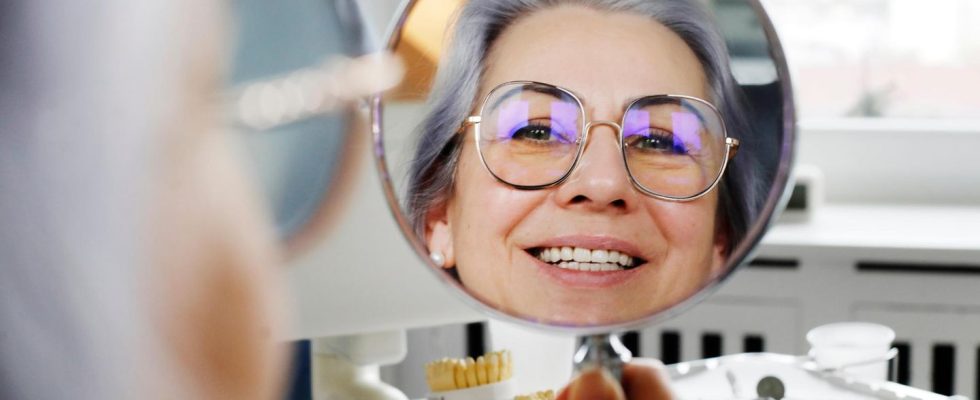Shaping, grinding, brushing: dental virtuosos work on perfect teeth. But dentures and veneers should fit the type.
By Kathrin Schwarze-Reiter
Atsuko Okubo is the artist in Dr. Gerd Reichardt. She leads a team of five dental technicians. People who want more aesthetic teeth come to the Stuttgart dentist because they are dissatisfied with their smile. Sometimes because the teeth are very small, far apart or have unsightly bumps. But rarely are the reasons for consultation solely based on optics. Teeth are often so worn down and deformed by years of grinding and clenching that the bite is no longer correct – and chewing becomes difficult. “Teeth are tools of nature. It is normal for them to lose substance over time,” says Gerd Reichardt. “Often the crooked, misshapen teeth also affect the posture of the jaw, which can affect the entire body.”
Dental technician Atsuko Okubo creates the artificial teeth in Dr. Gerd Reichardt
© Simon Koy
Reichardt works together with five other dentists and 41 other team members in the areas of orthodontics, implantology, periodontology and endodontics. Aesthetic dentistry is one of his specialties, which also includes blending teeth with ceramics – so-called veneers. The practice resides in a Wilhelminian style villa with a view of the Stuttgart valley basin, spread over three floors. She has been renting here for 40 years; the owners of the villa still live up under the roof. Anyone who enters the rooms would feel more like they were in a posh apartment if it weren’t for the eleven treatment chairs. Herringbone parquet, black Le Corbusier armchairs and many large paintings. There is a neon sign in the shape of a toothbrush at the reception.
Own laboratory in the dental practice

Reichardt has been running his practice in Stuttgart for 40 years. Liliia Schairer, whose treatment is about to be completed, is one of his satisfied patients
© Simon Koy
Gerd Reichardt has his own laboratory for comprehensive patient care. “We want to manufacture the dentures and veneers here on site – adjustments often have to be made until everything fits perfectly,” he says. Many steps are necessary: First, Reichardt takes an impression with silicone material. A wax model is created from it, in which laboratory technician Okubo builds up the teeth piece by piece as they will look in the future. To do this, she picks small chunks of wax from a pot and models each individual tooth. A computer program – “Digital Smile Design” – helps with this. It knows hundreds of data sets of teeth, so she can easily decide: which ones suit a 60-year-old woman and which suit a man with a rather small face? How large? What color? “In recent years, patients have increasingly wanted white, bright teeth. They look healthy and clean, but they shouldn’t be too dazzlingly white,” she says. Therefore, Ms. Okubo paints by hand.


